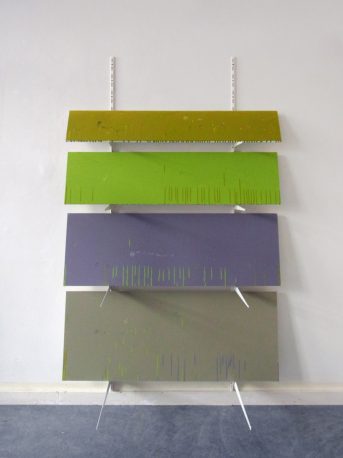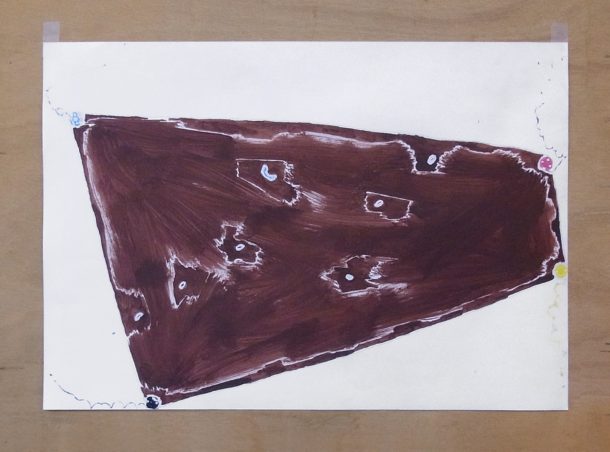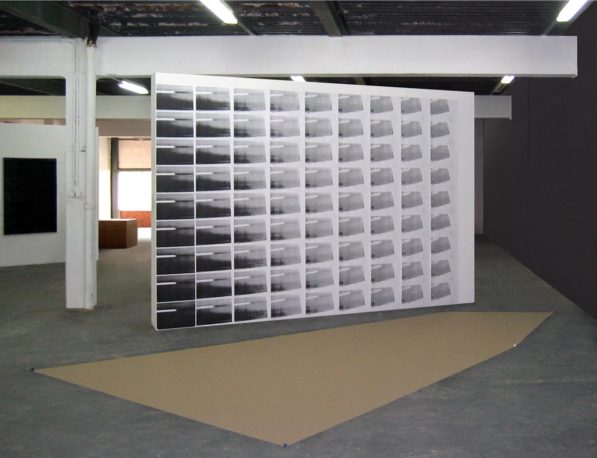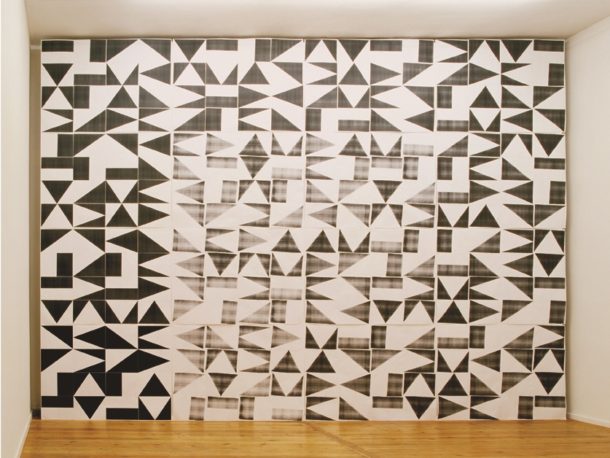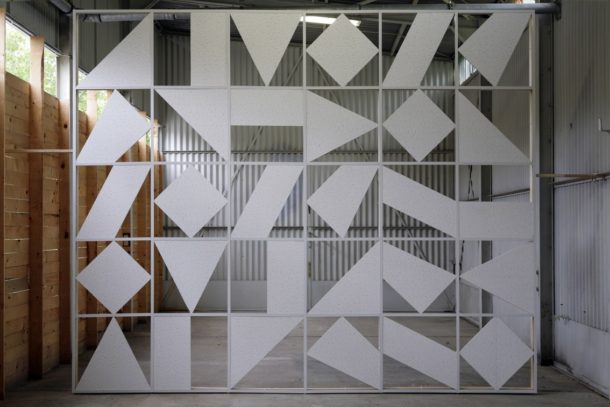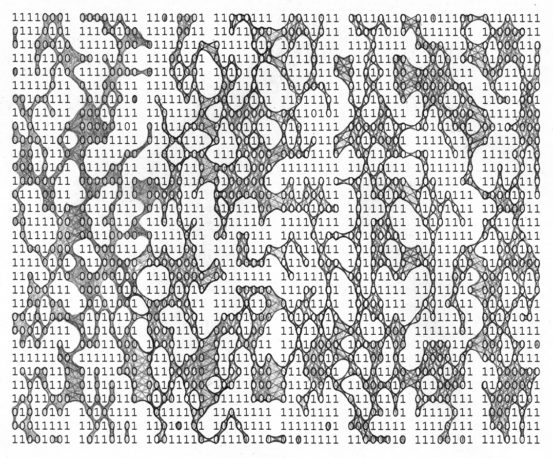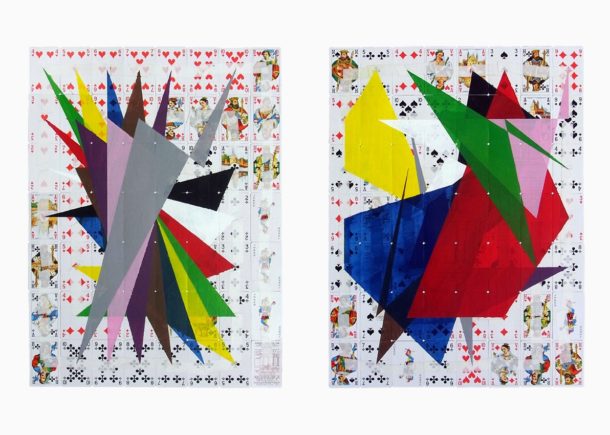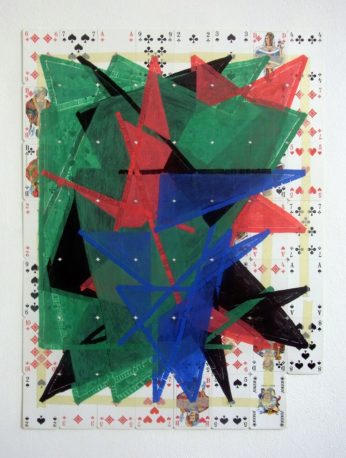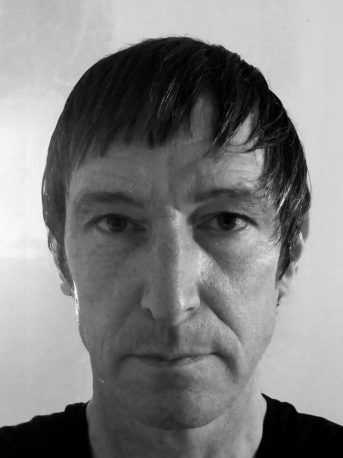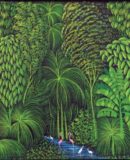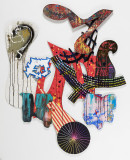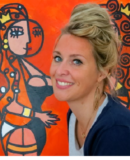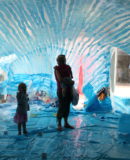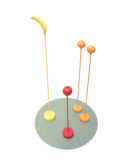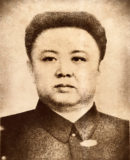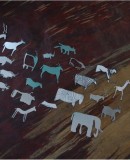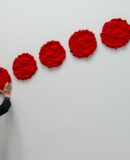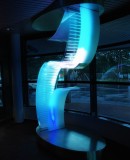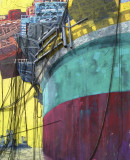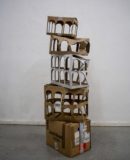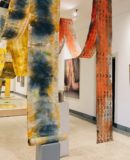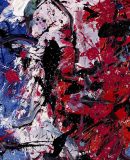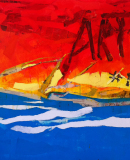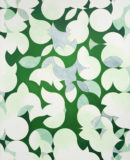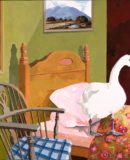World Fine Art Professionals and their Key-Pieces, 273 - Maarten Janssen
World Fine Art Professionals and their Key-Pieces, 273 – Maarten Janssen
Maarten Janssen works in two cities: in Rotterdam and in Berlin. Since 2003 he has regularly rented a studio in Berlin for a few months. Now he has worked in almost all areas of Berlin.
In 2006 he was an artist-in-residence at the Künstlerhaus Bethanien for six months. He likes working in two cities. It allows comparison and changes are more noticeable.
Do It Yourself
Moreover, things become a little less inescapable or ‘Alternativ-los’. Maarten Janssen: “In Berlin there is a completely different art climate. The own – rather expressionist – tradition is still present. With the Fall of the Wall, the import of artists from outside the city started and this gave the city various impulses. Art life was initially concentrated in Berlin-Mitte. The connection between the artists was therefore tight.
DIY (and Do It Yourself Einfach in particular) played an important role and the collegiality among artists was great. But over time, Mitte has normalized, many art spaces have moved to Kreuzberg and Schöneberg or have moved to the periphery. The scene has also become fragmented. Despite but also partly because of these developments, there is still a lot to see and experience in Berlin.”
Janssen was active for a long time within the Duende Work Community in Rotterdam. Now he works in the Borgerstraat under the smoke of the Sparta Stadium in one of the ateliers of the SKAR (Stichting KunstAccomodaties Rotterdam).
Objectivity
I am in this Rotterdam atelier. On the base of an ‘architect table’ a much larger worktop is mounted, which is tilted up slightly. On the walls hang paintings and on a flat door on trestles are various drawings. In the background, music from the movie Hell or High Water – a film about two brothers who attack small banks in the South of America, can be heard.
Janssen strives for objectivity in his paintings. This means, among other things, that he hands over for example decisions about color and layout. With the help of dice, coins, spinning tops, playing cards, lottery tickets and www.random.org, he ultimately allows the work to determine how it will look. You could name it coincidence-art. It is also called Aleatoric (alea iacta est = the dice is rolled).
Over the centuries, various artists and composers used an aleatory process. Cage is the example. He worked with the I Ching. Mozart already occasionally threw a dice three centuries before him. Today, the randomizer is hidden in computer algorithms. In Janssen’s work, however, you can actually see what caused the so-called coincidence. The instruments or traces of their use are on the surface. Work and decision procedure coincide. Is it still a coincidence? “I have nothing to report about coincidence. I want to give the work a language with which it can speak for itself. ”
Game theory
Janssen’s approach and way of thinking is partly inspired by the work of American minimalist artists such as Carl Andre and Donald Judd. And by that of Sol LeWitt. Janssen, however, starts from a different basic principle, that of game theory. “It has a lot to do with biology. What is a germ, how does something grow, how do I visualize a building plan, is there an organic-mechanical contrast, what is mutation, what is a cyborg? Actually, I want to make an individual. The dice is DNA. ”
Once the method is established, the result remains a surprise. This is consistent with the scientific approach. But even if he wants to work as objectively as possible, Janssen works within the tradition of painting. “That is my first reference. I understand that my working method has ‘something scientific’, but that is not exceptional in painting. I communicate with the unknown. Many scientists probably do that too, but I circle around it, metaphorically…. indefinitely postponing conclusions. It would certainly seem rather unscientific to a scientist. “
Key work / Turning point
He does not really have a key work, in the sense of one work that constituted a turning point. “Every work is a key work for the works that were not created.” However, there is a period when his work took a decisive turn.
“The tension between the second and third dimension is inherent in painting and drawing. In any case, I have learned to apply the rules of the central perspective. The origin of the central perspective suggestion of a three-dimensional space lies in the Renaissance. I did not find this type of realism very interesting at the time and was more interested in alternative surface coding.
In the Middle Ages, the book illuminator had to reconcile three spatial dimensions with a fourth dimension, the ‘distance-to-God’. Length, width, depth and … Height! Saints are depicted taller than unholy bystanders. Christ puts a foot outside the frame of the painting. Bishops hold entire cathedrals under their arms.
Differences in height therefore say nothing about near or far. Only by covering up the position in the room becomes clear. Other laws apply in heaven. The space in the Romanesque book illumination has cosmic properties.
In the late 1940s, the American physicist Richard Feynman introduced the so-called Feynman diagrams; four-dimensional time-space graphs that illustrate the interactions between elementary particles. I made paintings with the intention of distributing paint over the surface as if it were based on a Feynman diagram. For that I needed an ‘event’ in addition to ‘space’ and ‘time’.
I obtained this ‘event’ (points in the coordinate system) by pressing the random key on the calculator. In the context of ‘making the abstract tangible’ (space by applying chapped and greasy paint, time by applying brushstrokes in an orderly manner), the random test became a dice dipped in paint. Rolling the dice in the imaginary coordinate system of the time-space graph then quickly gave way to rolling the dice as a coding act in itself. That was in 1992.”
Dice
The work Regal (‘rack’ – image 1) hangs on one of the walls; it consists of four varnished planks under each other, different in shape, size and color. For each plank, the color was determined by dipping five dice, each in one of the five base colors and throwing them over the plank. The number of eyes in the print of each stone indicates how many parts of yellow, red, blue, black or white the respective mixing color consists of. The rolling tracks of the dice are also visible. In this ‘dice phase’ the plank lay flat on the supports of the rack. In the next phase, the plank is on its side and painted in that position. Drip tracks emphasize the gravitational field and provide insight into the order of painting.
We then look at the work c5m4y2k2 (image 2), a work in brown tones, made according to a dice method with four dice in four colors. Pieces of white paper remain between the brush strokes. They look like eyes, and the speckled brown around them is thought by some to be squirrels. Although such associations would be a reason for many to immediately throw the work in the trash, they are acceptable to Janssen. Non-referral is not a theme for him. The point is that you can also see no squirrels.
Card game
Janssen expands the objectification process by letting chance determine not only the colors by means of dice, but also other aspects of the work. Area distribution via the site www.random.org. Layering with drawing lots. Shape and size with playing cards.
We walk to two playing card paintings (image 8). In the first of the two, Janssen spirally laid out the playing cards as they were in the deck. As soon as the cards were laid out he connected all aces with black, all two’s with white, all three’s with red,…. The colors follow each other following the findings of anthropological research (see Berlin & Kay: Basic Color Terms). The resulting pattern forms the legend for the second painting for which the cards were shuffled first.
In a third work, the structure is not formed by corresponding values of the four card symbols, but by the consecutive values per card symbol. A black, a blue, a red and a green plane, intersecting each other, form a dynamic body (image 9).
On the opposite wall is a work in progress with cards twice the size. Smaller cards will be placed over it in due course. Top and bottom layers become intertwined, paint on a surface, surface on paint. It is the latest step in the development of work based on playing cards. “Problems that arise in a work regularly give rise to the next work. But it is not uncommon for me to unexpectedly find solutions to a dormant problem within a completely different way of working. ”
Neutrality
“Over the years, I have shown work in school rooms, convent rooms, garages and exhibition stands that have been converted into a white box (white cube), as well as in modernist bars, stripped shop premises, empty factories and office buildings. Due to the diverse nature and impact of such ‘theaters’, I looked for opportunities to exert more influence on the exhibition conditions. ”
With the concept of ‘neutrality’ in mind, he experimented with wall coverings made up of originals, copies and copies of copies, 50 percent black and 50 percent white. He was then faced with the question of how to halve a single building block – horizontally, vertically or diagonally? – and which halving to start with. Systematic alternation of different distributions and sequences forms the structure of the wall coverings (image 4). “Neutrality is not something static, but something that (to infinity) hovers between different possibilities.”
The unspeakable
Finally: “Although there is something to understand, it is not about the details. Those are side issues. The work is not a word game. The principle of comprehensibility does offer the opportunity to talk about the work or with the work, and to build up a form of intimacy. A springboard. Ultimately it’s all about the aura of work and the leap in the dark. ”
Images
1) Regall III, 2010, ± 120 x 200 cm. : enamel paint, various planks, 2) c3m4y2k2, 2014, 70 x 50 cm, acrylic paint, paper, 3) SERVICE GARAGE Amsterdam (ceiling wall wall floor), 2010, ± 600 x 270 x 300cm, computer prints, photocopies, 4) KUENSTLERHAUS BETHANIEN Berlin ( Neutral as both), 2006, ± 670 x 472 cm, computer prints, photocopies, 5) OZEAN, Berlin (BaByLoNTuRMSTeiN), 2011, ± 360 x 300 cm, suspended ceiling, 6) random.org, 2007, A4, pencil, ink, paper, 7) URBANSTRASSE, Berlin (Mühle 3 2 1 4), 2016, overview, 8) Verona blue Verona red, 2013, 48 x 63 cm, acrylic paint, pencil, playing cards, 9) markers, 2017, 48 x 63 cm, acrylic paint, brand markers, playing cards, 10) Maarten Janssen
http://maartenjanssenmaartenjanssen.nl
https://ifthenisnow.eu/nl/verhalen/de-wereld-van-de-rotterdamse-kunstenaar-28-maarten-janssen
Disclaimer: The views, opinions and positions expressed within this guest article are those of the author Walter van Teeffelen alone and do not represent those of the Marbella Marbella website. The accuracy, completeness and validity of any statements made within this article are not guaranteed. We accept no liability for any errors, omissions or representations. The copyright of this content belongs to Walter van Teeffelen and any liability with regards to infringement of intellectual property rights remains with the author.

